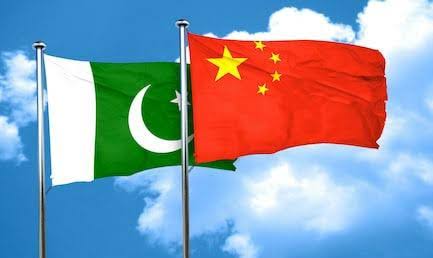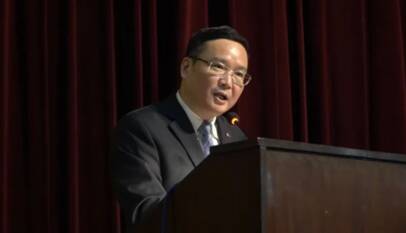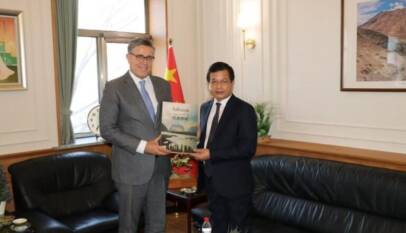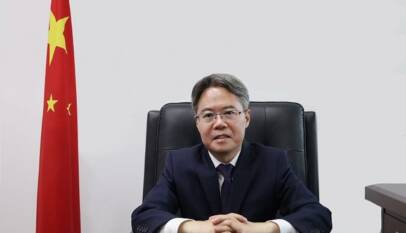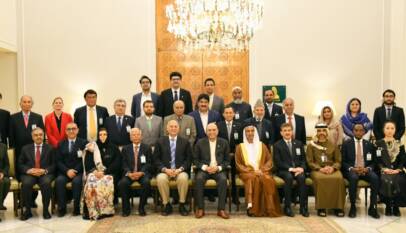Pakistan needs to learn from Chinese model of poverty alleviation: Hassan H Zaidi
ISLAMABAD:
Prime Minister Imran Khan has praised Chinese leadership for eliminating absolute poverty from the country.
Given that China is the world’s most populated country (1.4 billion people), started off as one of the poorest nations, and has still not graduated to a developed economy status, this is a historic achievement.
In 1978, when economic reforms started, China was predominantly an agrarian society and the incidence of rural poverty was more than 97%. Since then 770 million rural people have been lifted out of poverty including nearly 99 million over the last eight years, coinciding with the inauguration of President Xi Jinping.
Poverty remains a major socio-economic problem in Pakistan. The important question is how Pakistan can learn from China’s successful fight against poverty. As each country has its peculiar cultural, political and economic conditions, poverty alleviation policies of one can’t simply be replicated in another. Nevertheless, in terms of broad areas, Pakistan can take a leaf out of the book of China’s anti-poverty campaign.
The foremost condition for poverty alleviation is sustained economic growth. Whether capitalist or socialist, the economy must register robust growth over a long period for pulling the population out of poverty.
This is because for all its commitment to pursuing pro-people agenda and all the sincerity of its leadership, a nation can’t defeat poverty unless it has sufficient resources to do so. Growth is the sure-shot way to access these resources.
Growth rates
Over the past four decades, the Chinese economy has registered a consistently high growth. During the 1980s, the first decade of reforms, the economy registered average annual growth of 9.7%. The following two decades saw the growth rate increase to 10% and 10.35% per annum respectively.
During 2010-19, the annual growth rate slowed to 7.6% on average, as China shifted towards a more qualitative and technology-based growth.
In all, during the last four decades, the Chinese economy registered average annual growth of 9.4% – the highest ever by any country over such a long period. As a result, China is now the second largest economy in the world – only a few years away from reaching the top of the ladder — with per capita income of nearly $11,000. During the pandemic-blighted 2020, China remained the only major economy across the globe to register positive economic growth.
Because of declining birth rates, the per capita GDP growth remained close to the overall economic expansion. On average, per capita income grew 8.2% during the 1980s, 8.7% during the 1990s, 9.7% during the 2000s, and 7.2% during 2010-19.
The consistently rapid aggregate and per capita GDP growth provided a solid foundation for the government to take on poverty. On the other hand, Pakistan’s economic growth has been on a roller-coaster. Having registered 6.8% average annual growth during the 1960s, the economy slowed to 4.8% during the 1970s.
The following four decades recorded average annual growth of 6.5%, 4.6%, 4.7% and 3.9% respectively.
Pakistan’s per capita income has grown even slower, because of a relatively high birth rate. On average, per capita income grew 4.1% during the 1960s, 1.8% during the 1970s, 3.4% during the 1980s, 1.1% during the 1990s, 2.1% during the 2000s and 1.8% during 2010-19.
In the face of low and inconsistent economic and per capita income growth, poverty alleviation remains a pipedream.
Resource allocation
Although economic growth is a necessary condition for poverty alleviation, it is by no means a sufficient condition. In a market economy, where resource allocation is done by the ability to pay, economic growth is generally accompanied by rising inequalities among different income groups. It is for the state to come to the rescue of people at the bottom of the economic heap and take measures to make them productive economic agents by creating the necessary conditions.
It may be mentioned that though closely related, egalitarianism and poverty alleviation are different.
Egalitarianism essentially entails narrowing income differences until everyone has broadly the same level of income. Absolute poverty, on the other hand, means lack of access to the necessities of life.
A society can be perfectly egalitarian yet poor, while rich societies tend to have wide income disparities.
The distinction is important, because egalitarian strategies are essentially different from poverty alleviation strategies, and the government must be clear whether it is attacking poverty or economic inequalities.
In China, the economic reforms gradually enhanced the role of market in resource allocation. But the state didn’t adopt a hands-off approach. Instead, under “Socialism with Chinese Characteristics,” it provided strategic direction to the whole development process. Special importance was attached to the right to livelihood. That didn’t mean that the state would provide jobs to the entire labour force.
Rather it meant that the state would create conditions conducive for job creation by enhancing the productive capacity of people through such measures as improved public services, social sector investment, infrastructure development, uplift of remote regions, and improved production and distribution channels.
Needless to mention, such measures required not only strong government commitment to poverty eradication but a strong resource base as well to translate the commitment into reality. In recent years, technological development, particularly digitalisation, has been widely and most profitably used in China in the fight against poverty.
The almost universal use of mobile phones and internet has enabled people living in remote areas to introduce their products across the country, while vibrant e-commerce channels have enabled them to sell their products. Thus, internet is being used not only for consumption but production and exchange as well.
Meaningful strategy
Pakistan has lacked a meaningful poverty alleviation strategy. For one thing, poverty alleviation is often confused with income support. No country can eliminate poverty by providing handouts to the poor or low-income people.
In fact, income support may perpetuate the culture of poverty by making people dependent on cash flows from the government.
As the Chinese experience shows, it’s only by making people more productive and enabling them to participate in exchange of goods and services that they can be pulled out of poverty. Income support should be only for the people who are temporarily unemployed, or who can’t work because of age, deformity, sickness, prohibitive social norms, or any other compelling reason.
Finally, political stability has led to macro-economic stability, predictability of business environment and continuity of policies in China.
From time to time, Western leaders and media criticise China for what they call its authoritarian political system. Be that as it may, the Chinese political system has been the major architect of the country’s tremendous economic achievements.
It’s no coincidence that at present China is both an economy with the highest number of billionaires and a poverty-free society. This doesn’t mean that Pakistan should replicate the Chinese political model. Pakistan is a multi-party democracy and should remain so.
What we need, however, is political stability and greater political maturity, and the resultant continuity and predictability of policies. This will give investors a lot of confidence, as they undertake long-term productive investment.
The writer is an Islamabad-based columnist
Chinese Ambassador highlights significance of Third Plenary Session for China-Pakistan cooperation
The Third Plenary Session of the 20th Central Committee of the Communist Party of China ha…



